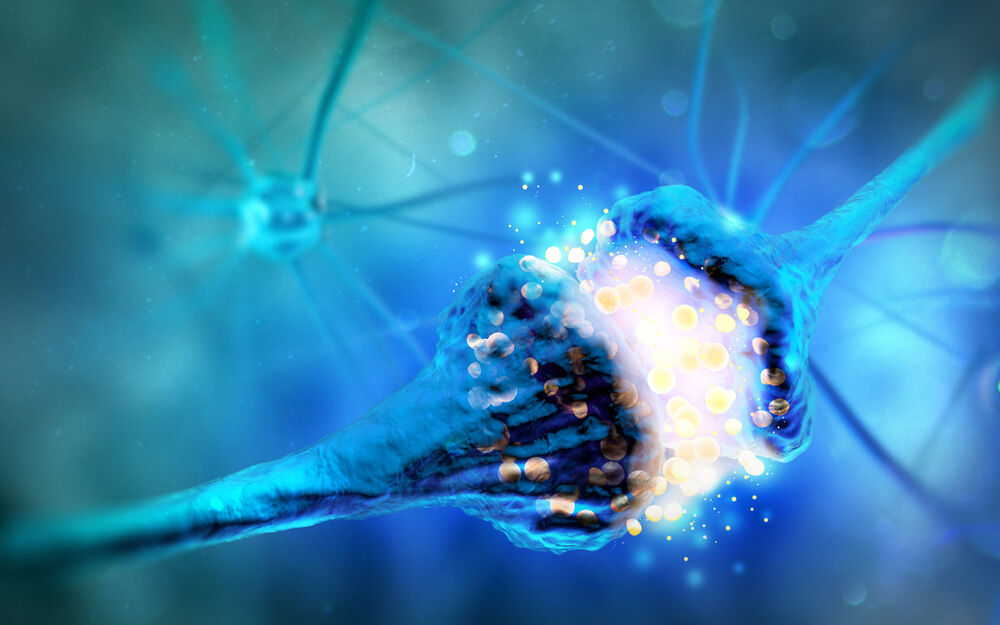Tramadol: History and Overview

Tramadol is an active substance used to reduce pain. To do so it acts on specific nerve cells in the spinal cord and brain.
Specifically, tramadol is an effective analgesic for the treatment of severe pain, such as postoperatively. A single 100 mg dose of this drug is equivalent to 1 g of paracetamol.
It’s a pain reliever in the opioid family, as is morphine. However, tramadol has atypical behavior when compared with the representative of opioid drugs.
In addition to its usefulness in reducing pain, its use as an antidepressant and against obsessive-compulsive disorder has also been investigated, as it works by increasing the release of serotonin. However, there are no studies of its effects as a long-term antidepressant.
History of tramadol
This drug was first synthesized by a German chemist named Kurt Flick who worked at the pharmaceutical company Grünenthal. This chemist was trying to obtain a cough suppressant by modifying the chemical structure of codeine, an active principle obtained from poppies.

Kurt wanted to synthesize a drug that didn’t have the negative effects of opioids. The problem arose with the crisis concerning thalidomide, another drug marketed by the same pharmaceutical company. This crisis paralyzed German research for 15 years.
It was Ernst-Günter Schenck who took up the research that eventually commercialized and popularized tramadol in 1977. “I never would have thought it would become so popular,” says Flick now.
What are opioid drugs?
We have mentioned that tramadol is a drug in the opioid family, but what is an opioid? The opioid family consists of a series of highly analgesic active principles that act on receptors found mainly in the central nervous system and in the gastrointestinal tract.

Although the term opiate is commonly used to refer to all opium-like drugs, it is more appropriate to limit its scope to the natural alkaloids of opium and their semisynthetic derivatives. There are three main classes of opiate substances:
- Opium alkaloids: morphine and codeine
- Semi-synthetic opioids: heroin and oxycodone
- Synthetic opioids: tramadol
Throughout this article we’ll talk about the following aspects related to tramadol:
- Mechanism of action
- Pharmacokinetics
- Indications and dosage
- Adverse reactions and contraindications
- Tramadol addiction
Mechanism of action of tramadol
The mechanism of action of this drug is dual. It will carry out its analgesic action thanks to the fact that it acts in two different ways in the body.
On the one hand, it has an agonist activity on central μ-type opiate receptors. Receptors are structures of cell membranes that, when interacting with a molecule (both synthetic and the body itself), trigger a series of chemical reactions in the body causing an effect.

In addition to its agonism with opiate receptors, the analgesic effect of tramadol is also due to its ability to block the reuptake of synaptic amines. Inhibit reuptake of norepinephrine and serotonin in the central nervous system. Hence, other indications for this drug have been investigated.
By inhibiting the reuptake of these substances, it prevents the transmission of pain through the spinal cord. These effects are quite significant in the overall analgesic effect of tramadol.
You may be interested in: Medications for Back Pain
Pharmacokinetics
Within the pharmacokinetics of tramadol we will talk about four aspects: absorption, distribution, metabolism and elimination.
Absorption
The absorption of a drug is the process by which it passes into the bloodstream. In this sense, tramadol is rapidly and almost completely absorbed after oral administration. We can say that the bioavailability of an oral dose of 50-100 mg is between 70 and 90%.
Bioavailability is the rate and amount at which the active ingredient is absorbed and is available to carry out the action.
Distribution
Tramadol is 20% bound to plasma proteins, the unbound or free proportion being the one that will exert the action. This union appears to be independent of concentration.
It’s important to note that tramadol is capable of reaching the brain, as it crosses the blood-brain barrier. In addition, it’s also capable of crossing the placenta, so pregnant women have to be especially careful with this drug because the fetus can be affected.
Metabolism
Metabolism is understood to be the chemical reaction that the drug undergoes in the body to transform itself into a substance that is easier to eliminate. The molecules resulting from these biotransformations are known as metabolites.
Tramadol is primarily metabolized in the liver. So far, 11 different metabolites of tramadol have been identified in urine.
Of all of them, animal studies have shown that the O-desmethyl-tramadol metabolite is between 2 and 4 times more potent than the parent molecule.
Elimination
Both tramadol and its respective metabolites are almost completely eliminated in the urine. If patients have kidney and liver dysfunction, the elimination time of the drug may be slightly increased. In this case, the dose may have to be adjusted in these patients.
Indications and dosage
As we have said, tramadol is a drug that’s recommended for the treatment of moderate to severe pain. The dose to be administered should be adjusted to the intensity of pain and the individual sensitivity of each patient. However, the lowest possible effective dose should always be administered, in order to avoid adverse effects.

There are certain people groups in which the dose adjustment must be more careful:
- Adults and adolescents over 12 years of age: the initial dose is 50-100 mg (1 or 2 capsules) followed by another 50-100 mg every 6-8 hours. They should never exceed a daily dose of 400 mg, which corresponds to 8 capsules. In severe cases which require prolonged treatment of tramadol, a rigorous monitoring of the treatment should be carried out by the specialist.
- Elderly patients: A dose adjustment isn’t usually necessary until the age of 75 without renal or hepatic insufficiency with symptoms. At an older age, the dosing intervals tend to lengthen.
- Patients with kidney failure and liver failure: These people clear the drug more slowly. For this reason, the doctor usually lengthens the dosing intervals according to the clinical needs of each patient.
Discover more: Back Pain: Symptoms, Types, Causes and Treatment
Adverse reactions and contraindications
Among the most frequent adverse reactions we find nausea and dizziness. However, the medication can also produce other symptoms in different functions of the body such as:
- Psychiatric disorders: dependence
- In the central and peripheral nervous system
- Vision changes
- Gastrointestinal disorders
On the other hand, tramadol is contraindicated in the following situations:
- Known drug hypersensitivity
- Acute alcohol, hypnotic, analgesic, and opioid poisoning
- Patients under treatment with iMAOS
- Severe respiratory failure
- Uncontrolled epilepsy
- Severe kidney or liver failure
Tramadol addiction
As we have seen, one adverse effect of tramadol is dependence. This is a characteristic adverse effect of opioid drugs.
During the last few years, the addiction problems that opioids are causing in many developed countries have become an issue to be dealt with on a daily basis. Although tramadol is marketed in Spain under medical prescription, like other opioids, there are countries where its sale is not controlled.

For example, research in the Journal of Forensics and Legal Medicine indicated that between 1996 and 2012, the number of overdose deaths associated with this drug in Northern Ireland had increased from 9% to 14%.
The problem with this is the lack of regulation on these drugs in those countries. Fortunately, in countries such as Spain, tramadol, as we have mentioned, is supplied by prescription, so it’s a drug controlled by the authorities.
In addition, its prescription has decreased in recent years due to its powerful effects. It’s usually resorted to in cases of very acute pain or accidents.
Tramadol is an active substance used to reduce pain. To do so it acts on specific nerve cells in the spinal cord and brain.
Specifically, tramadol is an effective analgesic for the treatment of severe pain, such as postoperatively. A single 100 mg dose of this drug is equivalent to 1 g of paracetamol.
It’s a pain reliever in the opioid family, as is morphine. However, tramadol has atypical behavior when compared with the representative of opioid drugs.
In addition to its usefulness in reducing pain, its use as an antidepressant and against obsessive-compulsive disorder has also been investigated, as it works by increasing the release of serotonin. However, there are no studies of its effects as a long-term antidepressant.
History of tramadol
This drug was first synthesized by a German chemist named Kurt Flick who worked at the pharmaceutical company Grünenthal. This chemist was trying to obtain a cough suppressant by modifying the chemical structure of codeine, an active principle obtained from poppies.

Kurt wanted to synthesize a drug that didn’t have the negative effects of opioids. The problem arose with the crisis concerning thalidomide, another drug marketed by the same pharmaceutical company. This crisis paralyzed German research for 15 years.
It was Ernst-Günter Schenck who took up the research that eventually commercialized and popularized tramadol in 1977. “I never would have thought it would become so popular,” says Flick now.
What are opioid drugs?
We have mentioned that tramadol is a drug in the opioid family, but what is an opioid? The opioid family consists of a series of highly analgesic active principles that act on receptors found mainly in the central nervous system and in the gastrointestinal tract.

Although the term opiate is commonly used to refer to all opium-like drugs, it is more appropriate to limit its scope to the natural alkaloids of opium and their semisynthetic derivatives. There are three main classes of opiate substances:
- Opium alkaloids: morphine and codeine
- Semi-synthetic opioids: heroin and oxycodone
- Synthetic opioids: tramadol
Throughout this article we’ll talk about the following aspects related to tramadol:
- Mechanism of action
- Pharmacokinetics
- Indications and dosage
- Adverse reactions and contraindications
- Tramadol addiction
Mechanism of action of tramadol
The mechanism of action of this drug is dual. It will carry out its analgesic action thanks to the fact that it acts in two different ways in the body.
On the one hand, it has an agonist activity on central μ-type opiate receptors. Receptors are structures of cell membranes that, when interacting with a molecule (both synthetic and the body itself), trigger a series of chemical reactions in the body causing an effect.

In addition to its agonism with opiate receptors, the analgesic effect of tramadol is also due to its ability to block the reuptake of synaptic amines. Inhibit reuptake of norepinephrine and serotonin in the central nervous system. Hence, other indications for this drug have been investigated.
By inhibiting the reuptake of these substances, it prevents the transmission of pain through the spinal cord. These effects are quite significant in the overall analgesic effect of tramadol.
You may be interested in: Medications for Back Pain
Pharmacokinetics
Within the pharmacokinetics of tramadol we will talk about four aspects: absorption, distribution, metabolism and elimination.
Absorption
The absorption of a drug is the process by which it passes into the bloodstream. In this sense, tramadol is rapidly and almost completely absorbed after oral administration. We can say that the bioavailability of an oral dose of 50-100 mg is between 70 and 90%.
Bioavailability is the rate and amount at which the active ingredient is absorbed and is available to carry out the action.
Distribution
Tramadol is 20% bound to plasma proteins, the unbound or free proportion being the one that will exert the action. This union appears to be independent of concentration.
It’s important to note that tramadol is capable of reaching the brain, as it crosses the blood-brain barrier. In addition, it’s also capable of crossing the placenta, so pregnant women have to be especially careful with this drug because the fetus can be affected.
Metabolism
Metabolism is understood to be the chemical reaction that the drug undergoes in the body to transform itself into a substance that is easier to eliminate. The molecules resulting from these biotransformations are known as metabolites.
Tramadol is primarily metabolized in the liver. So far, 11 different metabolites of tramadol have been identified in urine.
Of all of them, animal studies have shown that the O-desmethyl-tramadol metabolite is between 2 and 4 times more potent than the parent molecule.
Elimination
Both tramadol and its respective metabolites are almost completely eliminated in the urine. If patients have kidney and liver dysfunction, the elimination time of the drug may be slightly increased. In this case, the dose may have to be adjusted in these patients.
Indications and dosage
As we have said, tramadol is a drug that’s recommended for the treatment of moderate to severe pain. The dose to be administered should be adjusted to the intensity of pain and the individual sensitivity of each patient. However, the lowest possible effective dose should always be administered, in order to avoid adverse effects.

There are certain people groups in which the dose adjustment must be more careful:
- Adults and adolescents over 12 years of age: the initial dose is 50-100 mg (1 or 2 capsules) followed by another 50-100 mg every 6-8 hours. They should never exceed a daily dose of 400 mg, which corresponds to 8 capsules. In severe cases which require prolonged treatment of tramadol, a rigorous monitoring of the treatment should be carried out by the specialist.
- Elderly patients: A dose adjustment isn’t usually necessary until the age of 75 without renal or hepatic insufficiency with symptoms. At an older age, the dosing intervals tend to lengthen.
- Patients with kidney failure and liver failure: These people clear the drug more slowly. For this reason, the doctor usually lengthens the dosing intervals according to the clinical needs of each patient.
Discover more: Back Pain: Symptoms, Types, Causes and Treatment
Adverse reactions and contraindications
Among the most frequent adverse reactions we find nausea and dizziness. However, the medication can also produce other symptoms in different functions of the body such as:
- Psychiatric disorders: dependence
- In the central and peripheral nervous system
- Vision changes
- Gastrointestinal disorders
On the other hand, tramadol is contraindicated in the following situations:
- Known drug hypersensitivity
- Acute alcohol, hypnotic, analgesic, and opioid poisoning
- Patients under treatment with iMAOS
- Severe respiratory failure
- Uncontrolled epilepsy
- Severe kidney or liver failure
Tramadol addiction
As we have seen, one adverse effect of tramadol is dependence. This is a characteristic adverse effect of opioid drugs.
During the last few years, the addiction problems that opioids are causing in many developed countries have become an issue to be dealt with on a daily basis. Although tramadol is marketed in Spain under medical prescription, like other opioids, there are countries where its sale is not controlled.

For example, research in the Journal of Forensics and Legal Medicine indicated that between 1996 and 2012, the number of overdose deaths associated with this drug in Northern Ireland had increased from 9% to 14%.
The problem with this is the lack of regulation on these drugs in those countries. Fortunately, in countries such as Spain, tramadol, as we have mentioned, is supplied by prescription, so it’s a drug controlled by the authorities.
In addition, its prescription has decreased in recent years due to its powerful effects. It’s usually resorted to in cases of very acute pain or accidents.
- Boora, K. (2011). Tramadol. In xPharm: The Comprehensive Pharmacology Reference. https://doi.org/10.1016/B978-008055232-3.62788-6
- Duehmke, R. M., Hollingshead, J., & Cornblath, D. R. (2006). Tramadol for neuropathic pain. In Cochrane Database of Systematic Reviews. https://doi.org/10.1002/14651858.CD003726.pub3
- Scott, L. J., & Perry, C. M. (2000). Tramadol: A review of its use in perioperative pain. Drugs. https://doi.org/10.2165/00003495-200060010-00008
Este texto se ofrece únicamente con propósitos informativos y no reemplaza la consulta con un profesional. Ante dudas, consulta a tu especialista.







